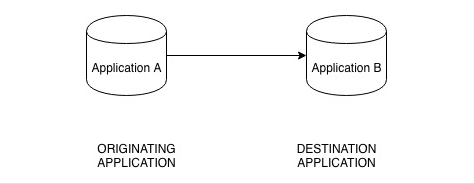Understanding Deep Hot Linking: A Comprehensive Guide
Introduction to Deep Hot Linking
In the vast and ever-evolving landscape of the World Wide Web, hyperlinks serve as the backbone of navigation, connecting users to diverse content across the internet. Among the various types of links, deep hot linking stands out as a specialized and powerful technique. Deep hot linking, frequently referred to as direct linking or fragment linking, is the process of constructing hyperlinks that direct users not just to a website's homepage but to specific areas or content within a webpage. This article will explore the concept of deep hot linking, its benefits, and how you can effectively implement it to enhance user experience and drive better engagement.
What is Deep Hot Linking?
Deep hot linking refers to the practice of linking directly to specific pages or content within a website rather than just the homepage. Think of it as directing someone straight to the exact location they need instead of making them navigate through multiple pages to find it. This technique is particularly useful for websites with extensive content, such as e-commerce platforms, media sites, or blogs, where users often seek specific information or products.
Deep hot links are not limited to just linking to a specific page; they can also point to specific sections or fragments within a webpage. For example, if a webpage contains multiple sections or chapters, a deep hot link can guide users directly to the desired section, saving time and improving the user experience.
How Does Deep Hot Linking Work?
To create a deep hot link, you need to generate a unique URL that points to the specific content or section within a webpage. Here's a step-by-step guide:
- Identify the Target Content: Determine the specific page or section you want to link to. This could be a product page, an article, or a specific paragraph within a blog post.
- Generate the Deep Link URL: Use any deep linking platform or library to create a unique URL for the target content. This URL should include parameters that specify the exact location within the webpage.
- Test the Link: Before publishing, ensure that the deep hot link works as intended. Test it on different devices and browsers to confirm its functionality.
Benefits of Deep Hot Linking
Implementing deep hot linking offers several advantages for both website owners and users:
1. Enhanced User Experience
By directing users to the exact content they are looking for, deep hot linking eliminates the need for unnecessary navigation, thus enhancing the overall user experience. Users appreciate websites that are easy to navigate and provide quick access to relevant information.
2. Increased Engagement
When users are directed to specific content, they are more likely to engage with it. This can lead to higher click-through rates, longer session durations, and improved conversion rates for e-commerce websites.
3. Improved SEO Performance
Deep hot linking can also contribute to better search engine optimization (SEO) performance. By linking to specific pages or sections, you can increase the visibility of those pages in search engine results, potentially driving more organic traffic to your site.
4. Streamlined Content Sharing
Deep hot links make it easier to share specific content with others. Whether it's sharing a particular product, article, or section of a webpage, deep hot linking ensures that the recipient lands exactly where they need to be.
Creating Effective Deep Hot Links
To create effective deep hot links, consider the following steps:
- Have a Clear Goal: Determine what you want to achieve with your deep hot links. Are you trying to drive traffic to a specific product, article, or section of your website? Having a clear goal will guide your linking strategy.
- Optimize the Target Page: Ensure that the page or section you are linking to is optimized for both users and search engines. This includes using relevant keywords, providing high-quality content, and ensuring fast loading times.
- Test and Refine: Regularly test your deep hot links to ensure they are functioning correctly. Gather feedback from users and make adjustments as needed to improve performance.
Deep Hot Linking in Action
Over a series of four blog posts, we will delve deeper into the world of deep hot linking. We will cover how to create and test deep hot links, provide troubleshooting tips, and explore how deep hot links can help your website. By the end of this series, you will have a comprehensive understanding of deep hot linking and how to leverage it for your online presence.
Examples of Deep Hot Linking
Here are a few examples of how deep hot linking can be used in different contexts:
- E-commerce: Direct customers to specific product pages or categories, enhancing their shopping experience.
- Blogging: Link readers directly to specific sections of an article, making it easier for them to find relevant information.
- Media Platforms: Guide users to specific episodes, chapters, or segments within a video or audio file.
Conclusion
Deep hot linking is a powerful tool that can significantly enhance the user experience, increase engagement, and improve SEO performance. By directing users to specific content or sections within a webpage, deep hot links make navigation easier and more efficient. To create effective deep hot links, it is essential to have a clear goal, optimize the target page, and regularly test and refine your links.
In conclusion, understanding and implementing deep hot linking can provide numerous benefits for your website. Whether you're an artist showcasing your work on Deephot.link, a business owner looking to boost sales, or a content creator aiming to engage your audience, deep hot linking is a valuable technique worth exploring. As you continue to develop your online presence, consider incorporating deep hot linking into your strategy to maximize its potential.

DEEP FRIED HOT LINK BITES - YouTube

THE EASIEST WAY TO CREATE A DEEP LINK TO FACEBOOK - Joturl

Platform UX: Facilitating Cross-Application Workflows with Deep Linking